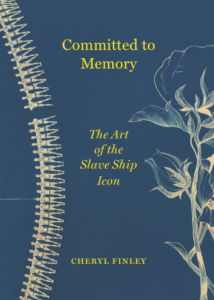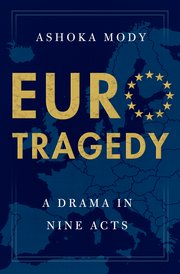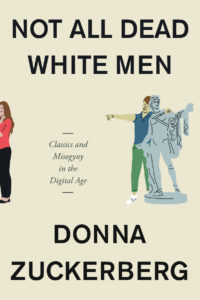
 Committed to Memory: The Art of the Slave Ship Icon
Committed to Memory: The Art of the Slave Ship Icon
By Cheryl Finley
Publisher: Princeton University Press
Recommended by Hélène B. Ducros
In this beautifully illustrated and brilliantly conceived book, Cheryl Finley traces the genealogy of an image that has come to symbolize the violence of the triangular trade Middle Passage. The image is of the well-known 18th century wood engraving that pictured the methodical layout of the human cargo inside a British slave ship – the Brookes. The engraving would help Abolitionists on each side of the Atlantic in the late 18th century and 19th century make their case against the horror and inhumanity of slavery through widely distributed prints that reproduced the representation. Her history of the visual circulation of this powerful testimony of captivity and metaphor of trauma leads her to the ways in which contemporary artists and cultural innovators in the UK and the US have used, interrogated, interpreted, reclaimed, rediscovered, appropriated, reinvented, reimagined, or retrieved the “slave ship icon” in the 20th century to tell the story of forced migration. Through their practice of what she calls “mnemonic aesthetics” or the ritualized politics of remembering, these artists have sought to express their identity and pass on their shared history to current and future generations in the African diaspora. Along Finley’s visual account of the many ways in which the icon still resonates today in the black Atlantic consciousness and culture, it is moreover impossible not to experience the weight of the visual parallel made early on in the book with those current chilling images that have tragically become common and that depict the stowage of human bodies as millions of displaced people and refugees have been forced to embark on boats to cross the Mediterranean in the hope of reaching European shores. This book not only constitutes an innovative, gripping and convincing approach to the narrative of slavery, but it also succeeds in anchoring its heritage in the present moment and casting light on contemporary “passages.”
 EuroTragedy: A Drama in Nine Acts
EuroTragedy: A Drama in Nine Acts
By Ashoka Mody
Publisher: Oxford University Press
Recommended by Malcolm Campbell-Verduyn
Written by the former chief representative of the International Monetary Fund to Ireland who was also the deputy director of the Fund’s European Department, EuroTragedy provides a detailed yet highly readable first-hand account of the Eurozone crisis. Five deeply researched historical chapters set the stage for the four subsequent “acts” chronicling fundamental errors and missteps afflicting national and regional responses to the crisis. The book culminates in what Mody describes as the “Final Act”: contemporary Europe characterized by decline and division. Despite this pessimistic assessment, Mody nevertheless finds promise in a younger generation of Europeans eager to overcome widespread distrust in their political systems.
 Not All Dead White Men: Classics and Misogyny in the Digital Age
Not All Dead White Men: Classics and Misogyny in the Digital Age
By Donna Zuckerberg
Publisher: Harvard University Press
Recommended by Louie Dean Valencia-García
Donna Zuckerberg has written not just an incredibly important book that teaches readers about the tactics of a far-right, antifeminist online community, the “manosphere,” but also demonstrates ways in which experts can use their knowledge to deconstruct the use and abuse of history. The men who prescribe to these ideologies believe they have taken a “Red Pill” (borrowing the concept from the 1999 film, The Matrix), which lets them see the world as it truly is. These men believe we live in a “gynocentric society” and are looking for “like-minded men, but also… are seeking advice on how to improve themselves.” As Zuckerberg describes, “The advice dispensed on these fora tends to fall into a few distinct categories: physical fitness…; professional concerns, with a special focus on navigating politically correct office environments and becoming economically self-sufficient; and dating advice…” One might describe the blogs, videos, reddit discussions, Twitter accounts—where racism and sexism abound and are encouraged—as an odious agora at the bottom of the internet.
Not All Dead White Men studies ways the men who belong to this online community reference and appropriate classical text and images to legitimize their own chauvinism. In particular, these “meninists” reference late Stotic philosophy to impugn those who are offended by their attacks—claiming a sort of rationality and superiority. In fact, as Zuckerberg describes, the earliest Stoics have “a reputation among scholars as one of the most feminist of all ancient philosophies” because of their belief “in radical gender equality.” Even Ovid’s Ars Amatoria has been appropriated by these modern-day men, the so-called “pick-up artist” community. The original work, an erotic poem that in its time subverted genre, taught women how to seduce men, and also taught men how to seduce a woman, how to keep her interest, and “how to fall out of love with unattainable women.” Despite the fact that contemporary ideas of race, gender, class, and sexuality have changed significantly since Ovid’s days, the work has been appropriated by men today. Along with scholars such as Johanna Hanink (The Classical Debt: Greek Antiquity in an Era of Austerity), Zuckerberg demonstrates the need to have scholars who can expertly navigate classical texts and also talk about the ways in which those images of the past are being used still today in the public sphere.
 Werner Schroeter
Werner Schroeter
Edited by Roy Grundmann
Publisher: Columbia University Press
Recommended by Thomas Nolden
Roy Grundmann’s volume Werner Schroeter is slated to reintroduce the little known auteur to students of film who thus far may have been looking in vain for peers of the ubiquitous Rainer Werner Fassbinder or Wim Wenders, all born – like Schroeter – in the last year of World War II. This beautiful collection is yet another example of Grundmann’s tireless attempts at making the work of filmmakers considered “difficult” palatable to viewers brought up on the easy fare of Hollywood narrative cinema. Grundmann’s introduction masterfully traces the trajectory of Schroeter’s life and work (he died in 2010) by elegantly switching between concise readings of Schroeter’s films and short previews of the articles he has collected in his volume. The list of contributors includes top critics like Gertrud Koch, Mark Siegel, Michelle Langford, and Christine Brinckmann (among others) who all succeed in unpacking the densely opulent aesthetics of a director whose eclectic production is steeped in operatic synesthesia, baroque multimediality as well as in the avant-gardist traditions that disarray the marriage of image and sound.
Langford points to the need of contextualizing any research on Schroeter’s generation of directors (the so-called New German Cinema) within the policies of Germany’s free-to-air television stations and their generous commissioning of works. Marc Siegel offers an illuminating reading of Schroeter’s series of short 8mm films addressing Maria Callas (and his obsession with the persona of the diva). Looking at such vignettes makes us understand how unabashedly Schroeter at times would use the lingua franca of the amateur to create his powerful, yet exhausting visual hypertexts that permeate his larger works, all drawing from and refer to a multitude of different traditions of performance. The volume concludes with a reprint of a conversation between Michel Foucault and Schroeter (first published in English translation in 1989). The authoritative filmography compiled by Stefan Drössler (Munich Filmmuseum) marks the other bookend of a volume which indeed can be looked at as the ultimate catalogue raisonné of this enfant terrible of European filmmaking.




